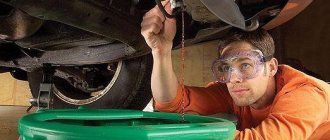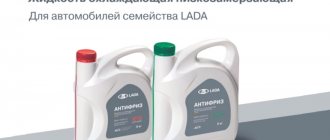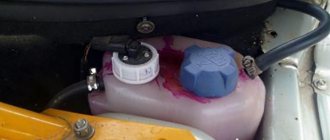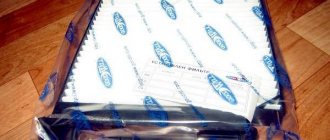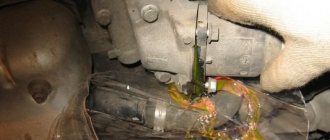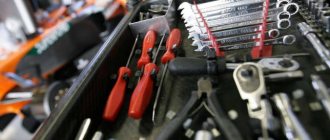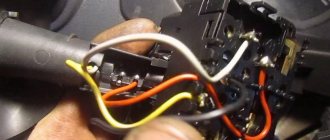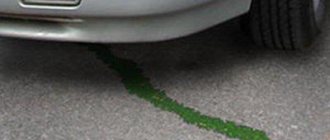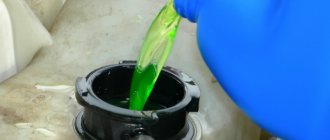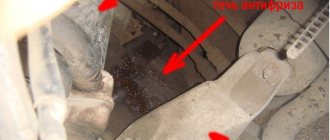The quality characteristics and level of coolant in the Renault Sandero crossover directly affect its operational efficiency, as well as the service life of the main vehicle systems. Therefore, in this article we will try to figure out what antifreeze to fill.
Selection of substance
As a coolant in Renault Sandero 1.6 cars, you need to fill in a substance of type D - GLACEOL RX. The liquid has a yellow color and medium viscosity. Also, in some Renault models, depending on the location of assembly, Cool Stream 4030 Premium coolant can be used as a replacement. In fact, hue in no way determines the characteristics or properties of a substance.
The total volume of the entire cooling system in Renault Sandero 1.6 cars, no matter what year of production they are, is 5.45 liters. There are marks on the expansion tank that can be used to determine how much substance is in the system. It is possible to purchase a concentrate for replacement and then dilute it with water. Catalog numbers of original substances for Renault Sandero cars with a 1.6 liter engine are 7711170545 and 7711170546.
As alternative options, you can use such types of antifreeze as Febi Korrosions Frostschutmittel, LUKOIL ANTIFREEZE ULTRA G12, Liqui Moly KFS 2001, Bizol Antifreeze G12+. This is not a complete list of different types of antifreeze, however, the listed options have demonstrated the best performance during operation of Renault Sandero vehicles. A prerequisite is the use of type D. When mixing different types of coolant, whatever the proportion, the operation of the entire system may be disrupted, the antifreeze may thicken, which will lead to the formation of plugs in the system and a negative impact on the Renault Sandero pipeline.
This is interesting: How much oil Nexia 8 cl
Replacement frequency, what antifreeze to fill
The manufacturer recommends replacing the coolant after 90,000 kilometers or 3 years of operation. In most cases, this period is optimal, provided that you use the recommended antifreeze.
If you fill in the original liquid, then it will of course be Renault Glaceol RX type D, code 7711428132 liter bottle. But if you can't find it, don't be upset.
Renault Sandero can also be filled with other antifreezes from the factory, for example, Coolstream NRC, SINTEC S 12+ PREMIUM. It all depends on the place of production of the machine and the concluded supply contracts. Since it is expensive to transport “water” from abroad, it is cheaper to use what is produced by local enterprises.
If we talk about analogues or substitutes, then any brand that has Type D approval recommended by the French automaker will do.
Volume table
| Model | Engine capacity | How many liters of antifreeze are in the system | Original/recommended fluid |
| renault sandero | 1.4 | 5.5 | Renault Glaceol RX type D (7711428132) 1 l. / TOTAL Glacelf Auto Supra (172764) / Coolstream NRC (cs010402) / SINTEC S 12+ PREMIUM (Obninsk) / Or any with Type D approval |
| 1.6 | |||
| renault sandero stepway | 1.4 | ||
| 1.6 |
Sequence of work
Before you begin replacing Renault Sandero antifreeze, you must ensure that you have the following tools and accessories. So, you will need a small piece of clean cloth, pliers, a container whose volume should not be less than 10 liters and, of course, the liquid itself.
A prerequisite for replacing antifreeze on a Renault Sandero is a cold engine. You also need to take care of personal protection. To do this, you can wear a respirator to prevent vapors from entering the respiratory system, gloves and glasses. The car must be on a horizontally level surface.
Before starting work, you need to check all connections for possible leaks, including the connections between the hoses and the thermostat housing. If the tightening is not tight enough, it is necessary to replace the metal clamps.
First you need to unscrew the cap of the expansion tank of the Renault car cooling system. Also, if there is engine crankcase protection, it must be removed. Then, using pliers, you need to loosen the clamp that secures the lower radiator hose of the car. The clamp is lowered along the length of the hose. At the next stage, you need to remove the hose from the radiator pipe and drain all the contents into a container that was prepared in advance. You must wait until the system is completely empty. After this, you need to tighten the valve plug, which is designed to release air. It is recommended to pour a little water through the expansion tank to flush the pipeline. Then, using a compressor, you need to blow out the remaining water from the system.
The lower radiator hose is installed in its place and securely fixed with a clamp. The new substance must be poured into the system with the valve cap removed to allow air to escape. After the solution begins to emerge from the valve instead of air, you should tighten the cap and cap of the expansion tank. Then you need to start the Renault Sandero engine, allowing the contents to circulate through the system. You can do the replacement yourself without any special equipment.
Leave a comment:
Click to cancel reply.
Step-by-step instructions for changing antifreeze in a car
Immediately before draining and replacing antifreeze in the Renault Sandero Stepway, it is necessary to prepare the car for the upcoming procedure. It is recommended to place the vehicle on a flat horizontal surface, without slopes or vertical elevations.
Important! According to the safety instructions, before changing the antifreeze in Renault Sandero Stepway, it is recommended to turn off the engine, let it cool and only then start working. The coolant heated when the engine is running remains in the expansion tank under high pressure. If the engine is not allowed to cool, a dense stream of antifreeze can burn the car owner's hands and face.
Next, you should take care of the appropriate tools. To change antifreeze in Renault Sandero Stepway you will need:
- Pliers;
- Key for 14 and 16;
- Screwdriver;
- Container for draining used antifreeze, with a capacity of at least 10 liters;
- Absorbent rag fabric;
- If necessary, additional replacement parts (pipes, valves, etc.).
The preparation procedure for changing antifreeze in a car’s cooling system usually takes no more than 1 hour. The process of replacing the coolant itself is divided into 3 stages sequentially:
- Stage 1 - draining outdated coolant from the Renault Sandero Stepway cooling system: The drain container is installed under the expansion tank;
- After the engine has cooled, carefully unscrew the drain tank cap. This is not recommended to be done abruptly due to the residual high pressure in the unit housing;
- Allow the used coolant to drain into the prepared container. In this way, you can test for clogging in the drain - if the substance does not pour out freely, this means that the drain is severely clogged;
- After draining used antifreeze, it is recommended to examine the contents of the drain container. If the technical fluid used is cloudy and has a pronounced sediment, this may indicate a corrosion process in the cooling system of the Renault Sandero Stepway;
- Screw in the drain plugs and return the expansion tank to its original position;
- Move the drain container under the vehicle cylinder block;
- Drain used antifreeze from the cylinder block;
- The flushing solution or distilled water is poured into the expansion tank until the “Full” symbol appears;
- Stage 3 - pouring fresh antifreeze. After the flushing has been completed, fresh coolant is poured into the expansion tank. It is important to note that if antifreeze concentrate is used as a coolant, it should be diluted with distilled water. The ratio of liquids depends on the desired boiling point of the substance and is indicated in the instructions for use of the concentrate. Then all the plugs are carefully screwed in, and final checks are made for the tightness of the cooling system, absence of leaks and defective parts.
Preliminary work before replacement
Before changing antifreeze on Sandero, you should prepare a box with tools and additional devices in advance. The list is as follows: small rags, pliers, a container designed to hold at least 10 liters and new coolant.
Before you start draining the fluid, you should allow the Renault Sandero engine to cool thoroughly. Personal protective equipment must be used. In this case, the following are suitable: a respirator, gloves, and safety glasses to prevent coolant from getting into your eyes. The machine is fixed on a horizontal, flat surface.
Before starting the replacement procedure, you should monitor the system for leaks, especially pay attention to the connecting nodes in the thermostat at the hose supply points. If the tightening is weak, install new clamps.
The filler cap of the expansion tank is unscrewed. If protection is installed on the engine crankcase, it must be removed. Using pliers, loosen the clamp that holds the hose at the bottom of the car's radiator. The clamp is pulled along the hose. Then the rubber tube is disconnected from the radiator and the antifreeze is drained into the bath, which was previously placed under the pipe. We are waiting until there is no antifreeze left in the system. Then the valve plug designed to release air is unscrewed. A certain amount of substance is poured through the neck of the tank to flush the system. Then, by pumping up pressure using a compressor unit, complete purging is performed.
The hose that fits from below to the radiator is installed in its original place and firmly fixed using a clamp. New coolant is poured into the expansion tank when the valve cap responsible for releasing air is removed. The update occurs until antifreeze begins to appear from the valve instead of air. This is a signal that the reservoir cap and cap should be tightened. The next stage involves starting the Renault Sandero engine to give it the opportunity to drive antifreeze through the system. Antifreeze is replaced independently, without causing any difficulties for the car owner.
Leaks and problems
When replacing coolant, you should pay attention to defects in the hoses; if there is the slightest doubt about their integrity, then you should take care of replacement.
It is also advisable to inspect the expansion tank; it is not uncommon for the internal partition to simply dissolve over time and clog the cooling system with flakes of plastic particles. To search for and purchase a barrel, you can use the original number 7701470460 or take the analogue MEYLE 16142230000.
The cover is also periodically changed, original 8200048024 or an analogue ASAM 30937, since the valves installed on it sometimes stick. Increased pressure is created and, as a result, leakage occurs, even in a seemingly serviceable system.
There are cases of thermostat failure 8200772985, improper operation or gasket leakage.
They come in two types: low-profile with a latch (Fig. A) and spring-spring (Fig. B). Low-profile with a latch, it is recommended to replace it with a regular worm-type one, since it is not always possible to clamp the original one without a special key. A diameter of 35-40 mm is suitable for replacement.
Do-it-yourself coolant replacement in Stepway
Every 90,000 km the old coolant is replaced. To perform this procedure, you need to stock up on 8-9 liters of cooling concentrate.
In order to replace a Renault Sandero Stepway, you will need a box with tools and related materials:
- antifreeze directly;
- container for old coolant;
- dry rags;
- pliers.
What is the technology for replacing antifreeze in the French car Renault Sandero Stepway? The process includes several stages that are carried out according to the scheme, and the replacement can be done with your own hands, the main thing is to find out what kind of antifreeze to fill in beforehand:
- First, the power unit of the machine is prepared. Long before work is completed, it is switched off, since replacement can only be carried out with a cold engine. Then the engine compartment is opened and the cap is pulled off the corresponding filler barrel to relieve pressure.
- The Sandero does not have a drain hole for the old coolant. Therefore, the crankcase protection is dismantled, after which a 10-liter container is placed under the radiator,
- To get rid of waste, you need to do it in two steps: remove the clamp at the bottom of the radiator by loosening the fasteners with a screwdriver, after which the pipe is dismantled and the liquid is drained into a container. To speed up the drainage, remove the plug from the fitting on the supply pipeline.
- After the system is emptied, the radiator parts are returned to their place. The old clamp for the pipe is most likely no longer suitable, so you should purchase a new one.
- Coolant is added to the expansion tank until it begins to run out of the outlet hole. After this, a plug is put on the fitting, and a lid is installed on the tank.
- The system is running. The engine is started and left running until the radiator pipe begins to warm up. This means that the coolant has already flowed through the system. After the Renault Sandero, the Stepway becomes jammed.
How to drain old fluid
- To remove the pipe, the clamp, which serves as a tie, is relaxed.
- With careful movements, the hose must be removed from the fitting and directed into the container, then the waste product will flow out of two holes, from the pipe and the radiator.
- After this, twist and remove the cap of the expansion tank and remove the plug covering the vertical fitting located on the thick pipe near the thermostat housing. After these manipulations, the old antifreeze will flow faster.
- The design of the Renault Logan cooling system does not allow you to completely get rid of the waste liquid; some of it will remain in the radiator for heating the interior, so you will have to sweat a little more and perform several operations: remove the remaining pipes. This manipulation requires care and precision, otherwise the radiator honeycomb of the stove can be destroyed.
After the system is completely empty, you will have to reassemble all parts and assemblies in the reverse order. The tubes are returned to their places and tightened with fresh clamps, since the “original” ones are disposable.
Let us remind you once again that since 2009, Renault Logan has been using GLACEOL RX Type D antifreeze, which has a characteristic yellow tint. This concentrate is diluted with water in a 1X1 ratio, regardless of the container volume. This is a high quality product and can be used for Logan cars with 1.4 and 1.6 liter engines with a filling volume of 5.5 liters.
Advantages and disadvantages
1 liter of Renault concentrate
The main advantages of Renault Type D antifreeze:
- Full compatibility with Renault and Nissan engines;
- The chemical composition is completely neutral to various metals, rubber and car enamel;
- Maintaining its normal liquid state up to an air temperature of -36.
Flaws:
- The manufacturer does not recommend diluting antifreeze with other refrigerants. In case of an emergency, it can only be diluted with distilled water or filled with the same coolant;
- Relatively high price compared to refrigerants from other manufacturers;
- It is not always possible to buy this coolant in regular auto stores.
This is interesting: Is it possible to drive with running lights without low beam headlights?
Replacement features
Preparation
What you need to prepare in order to cope with the process of changing the coolant as quickly and conveniently as possible:
- the refrigerant itself;
- clean rags;
- container into which you will drain waste consumables;
- pliers.
New coolant for Renault Sandero
Clean rags
Old basin for collecting antifreeze
Regular assembly pliers
Step-by-step instruction
- The work of changing the coolant must be carried out on a cold engine. Therefore, let the engine cool down, after which you need to relieve the pressure in the cooling system. To do this, open the hood and find your expansion tank. Remove the lid from it: this will release the pressure.
- Now you need to remove the engine protection. In Renault Sandero models, the developers did not provide holes for draining consumables in the engine and radiator. Therefore, place a previously prepared container under the radiator.
- To begin the process of draining the antifreeze, you will need to disconnect the outlet pipe from the lower radiator hose, having previously removed the clamp securing it.
- Disconnect the clamp: to do this, use a flat-head or Phillips screwdriver and unscrew the fastening screw.
- Now you can remove the outlet pipe from the hose and drain the used consumables.
- To increase the intensity of draining spent consumables, you can remove the fitting cap, which is installed on the coolant supply pipe to the heating device.
- When the antifreeze has completely drained from the system, put the radiator hose outlet pipe back in place and secure it with a clamp. There is a possibility that the old clamp will not be suitable for reuse, so you will have to buy a new one. Instead of the standard clamp that was installed, you can use a worm clamp.
- Now you need to pour coolant into the engine cooling system through the expansion tank. Pour in antifreeze until it begins to flow out of the air bleeder fitting. When this happens, replace the fitting cap. Also tighten the expansion tank cap.
- Start the engine. When the engine warms up, the lower radiator hose should be cold for some time, after which it will quickly begin to heat up. This indicates that coolant circulation has begun in a large circle in the cooling system. When the system fan turns on and starts working, the motor must be turned off. When the engine has cooled down a bit, check the antifreeze level. If necessary, add consumables to the system.
- It would also be a good idea to check the condition of the pipes and joints for leaks. If the liquid has just been filled, this is even easier to do: you will see the places where there is a leak immediately, since they will be highlighted with the color of the antifreeze being poured.
Disconnect the outlet pipe by removing the clamp securing it
Instead of the factory clamp, you can use a regular worm clamp
To increase the intensity of coolant drainage, disconnect the cap of the fitting
Pour new coolant into the system through the expansion tank
How to add antifreeze to Renault Logan
In order to fill this brand of car with new antifreeze, you will definitely need the following tools:
- Spanners Pliers Set of screwdrivers Container for draining used coolant Funnel for adding new antifreeze Various rags for removing smudges
Naturally, it is recommended to carry out such work using an inspection hole. If this is not possible, then the replacement should be made while lying under the car. You should immediately warn that the engine should be cold by this time.
So, to replace antifreeze you need to do the following:
- First of all, you need to relieve excess pressure from the cooling system. To do this, remove the cap of the expansion tank. After releasing excess air, you need to screw the lid back on. Then you need to remove the crankcase protection and substitute the previously prepared container. Used antifreeze will be drained here. Next, you need to remove the pipe. In the case when there are branded clamps on the hoses, they should be replaced with new ones, since they wear out very quickly. After this, the hose should be removed from the fitting and brought to a container for draining. Next, unscrew the cap from the expansion tank and the plug from the vertical fitting, which located on a wide pipe. After these actions, the antifreeze should drain more intensively. It should be noted that in this way it is impossible to completely remove old antifreeze from the cooling system, since it will remain in the cabin heater. In order to completely free the system from the old liquid, you need to do the following: loosen the clamps, pull the pipes that are on the thermostat body to a container for collecting antifreeze. After the old coolant has completely flowed out, you need to put everything back together. New coolant should be poured through expansion tank. You need to make sure that the drain plug is removed. You should fill it evenly, without jerking, until a stream begins to flow from the fitting. After this, you need to tighten the fitting and fill in the required amount of antifreeze. The level of the poured liquid should be exactly in the middle between the “minimum” and ““ marks. maximum" Do not forget to monitor the level of antifreeze in the expansion tank
Choice
For example, in engines with a volume of 1.6 liters, it is advisable to use fluids similar to D-GLACEOL RX, it has average viscosity values, and the color has a yellowish tint. Quite often, Renault owners fill in Cool Stream 4030 Premium coolant. The color it has does not affect the quality of the substance in any way.
All models, regardless of the year they were released, hold about 5.5 liters of liquid. The expansion tank has special marks by which you can find out the volume of the substance. They also use a special concentrate that is diluted with water, they have the following article numbers 7711170546 and 7711170545
An excellent option among popular brands are Lukoil Antifreeze Ultra G12, Liqui Moly kfs 2001, Febi korrosions Frostschutmittel, etc. When choosing, a prerequisite must be the presence of code D. It is advisable to use one type of antifreeze for Renault Sandero, since the use of different mixtures can lead to failures in the operation of the entire system. Since the liquid may thicken, plugs will appear that will interfere with normal circulation.
How to select and replace coolant for Renault Sandero?
Experienced motorists know that the quality of the coolant directly affects the performance of the engine. Therefore, attention should be paid to replacing this consumable item from time to time. Now we will tell you what kind of antifreeze you need to fill in for Renault Sandero, how often it should be done and how the process of changing the fluid takes place.
